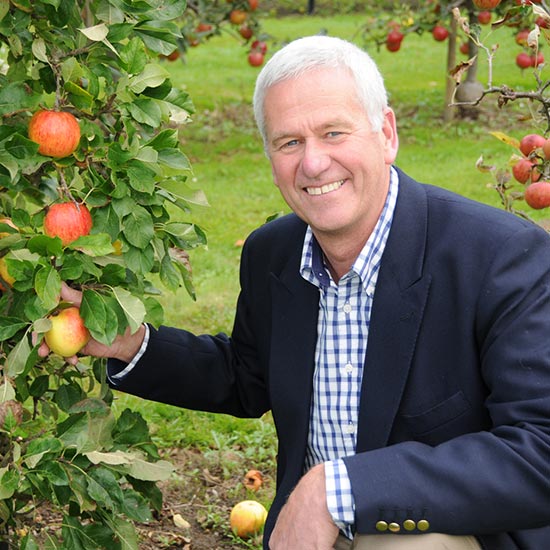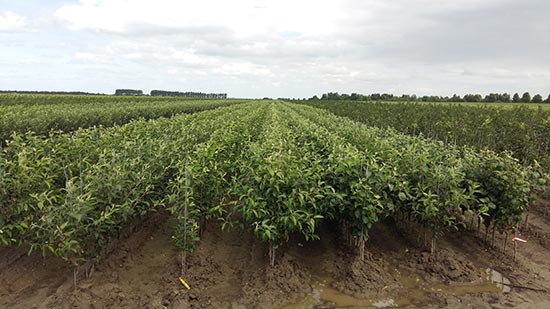It’s more than fifty years and over three million grafts since I first held a grafting knife in my hands and was captivated by clonal propagation techniques. I marvelled at how a plant with roots would accept what is no more than a small shoot cut from another tree and that in a very short space in time, that shoot would grow and flourish and bear fruits attached to its newly adopted parent. The extraordinary science of grafting and clonal propagation has of course been documented for thousands of years and has enabled the joy and benefits of growing fruits to be appreciated across the globe in every unfrozen continent. Having been captivated by grafting, I quickly looked to increase my knowledge of propagation and in particular to learn from past nurserymen and from historic gardens. In search of techniques developed centuries ago, I visited the gardens at Versailles in France where I saw for the first time orchards growing in pots. This historic garden was created in the 17th century and dwarf fruit trees were recorded during that time. A world of fruit growing, but in miniature. A pure delight. It was seeing these potted fruit trees that inspired me to consider how to bring potted fruits for others to appreciate and to gather together a range of varieties and species that are now known as the Sibley’s Patio range. This range has become well known across the UK and beyond and has proven itself over the past twenty five years.
Nurserymen are by their nature good at observing differences. If a nursery of fruit trees is propagated on the same rootstock, then each tree is remarkably similar in height and vigour, and a tree of less vigour easily stands out. In most cases this less vigorous tree will either have some physical damage or perhaps be diseased in some way. Occasionally though, no obvious reason for a marked difference in height or vigour is observed. This tree could, and I stress could be slightly different in some way and it is possible that it has developed some dwarfism. This change would most likely be caused by the sun’s radiation affecting the growing bud and changing the genetic make up of the tree very slightly. These slightly more dwarf trees are the ones that I and my nursery friends around the world have looked out for and identified. From these trees, a graft is taken and propagated in the normal way..
That tree is then observed to see if the dwarfism has continued in the next generation, and if it has, then further trees are grafted and the observations continue. It is by this method that the Sibley’s Patio range has been developed. All of the trees in the range are grafted onto a rootstock and I am careful to choose the best rootstock for each variety. Although rootstocks give vigour control, and it would seem obvious to choose a dwarf rootstock to maintain the dwarf nature of the tree, it is not always the best policy. Often we need to invigorate the tree to encourage fruiting and good fruit size. Whilst the range was inspired by the idea of growing fruit in pots, they are equally at home planted directly into the soil. Dotted around the herbaceous borders and beds, they give height and structure and their shallow roots and very minimal shading have no detrimental affect on summer flowering plants. In my opinion, they show off at their best when planted among spring bulbs. Will Sibley 5th November 2022
Will is a leading nurseryman and master grafter who has introduced many well known varieties of fruit to the UK. He is a a former Master of the Worshipful Company of Fruiterers and has also previously served as the chairman of the East Malling Trust.


